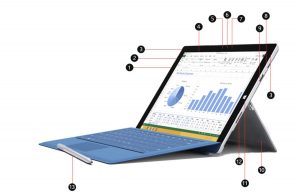What is diference between MIUI and HyperOS?

MIUI and HyperOS are both custom Android-based operating systems (OS) designed by Xiaomi, but they serve different purposes and represent different stages in Xiaomi’s software evolution. Here’s a breakdown of their differences:
Development Background
MIUI: MIUI has been Xiaomi’s signature Android skin for years. It’s a heavily customized version of Android with a lot of features, optimizations, and design changes to give users a unique experience compared to stock Android. MIUI has evolved through various iterations (MIUI 12, 13, 14, etc.) and is known for its visually appealing interface, customization options, and extensive features.
HyperOS: HyperOS is Xiaomi’s next-generation operating system, introduced as a successor to MIUI. It’s designed to be lighter, faster, and more seamless across devices, including smartphones, tablets, wearables, and smart home products. HyperOS represents Xiaomi’s move towards a more unified ecosystem, where different devices work more smoothly together.
Focus and Approach

MIUI: MIUI focuses heavily on customization, with themes, wallpapers, and lots of user control over how the interface looks and behaves. It’s feature-packed but can sometimes be criticized for being too “bloated” with extra apps and services (pre-installed apps that not everyone needs).
HyperOS: HyperOS is designed to be more streamlined and lightweight. While it’s still based on Android, Xiaomi is moving towards a system that uses fewer resources, prioritizes performance, and integrates better across a range of devices. HyperOS aims to create a more fluid experience by improving efficiency and reducing complexity.
Ecosystem Integration
MIUI: While MIUI does allow for some device integration within Xiaomi’s ecosystem (like linking with Xiaomi wearables or smart home devices), it’s not the core focus of the OS.
HyperOS: HyperOS is specifically engineered to enhance the interconnectivity of Xiaomi devices. It’s designed to seamlessly integrate Xiaomi’s smartphones, IoT devices, wearables, and even electric vehicles, providing users with a more unified experience across all their Xiaomi products.
Performance and Efficiency
MIUI: MIUI is known for its rich feature set, which can be resource-intensive. While it offers plenty of customization and features, some users may experience occasional lags or performance issues, especially on older or budget devices.
HyperOS: HyperOS is expected to be lighter and more efficient, which means it will likely run more smoothly, even on lower-end devices. The focus is on improving performance by reducing unnecessary background processes and optimizing resource usage.
Global Rollout and Availability
MIUI: MIUI has been widely used across all Xiaomi devices for years and is available globally, with some region-specific customizations.
HyperOS: HyperOS is a newer system and will gradually replace MIUI, but it is still in the process of rolling out. Initially, it will be introduced on select devices, with Xiaomi likely expanding it over time to cover more products globally.
User Interface
MIUI: MIUI has a distinctive, colorful, and feature-rich user interface, with plenty of customization options such as themes, widgets, and home screen layouts.
HyperOS: HyperOS will likely bring a cleaner, more minimalistic UI, with a focus on simplicity and performance. It may reduce some of the visual clutter of MIUI to create a faster, more user-friendly experience.
Conclusion
MIUI is Xiaomi’s established Android skin, known for its customization and feature-rich nature, but can be heavy for some users.
HyperOS is Xiaomi’s future-focused, next-generation OS designed to be lighter, faster, and more integrated across Xiaomi’s expanding ecosystem of devices, representing a more optimized and streamlined approach.
If you’re used to MIUI, you’ll likely notice HyperOS feels more focused on performance and simplicity while aiming to better connect various Xiaomi devices.







